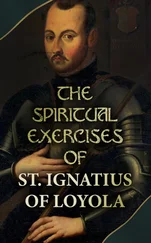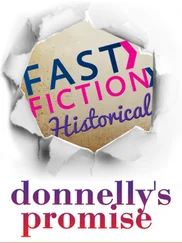Ignatius Donnelly - Antediluvian world
Здесь есть возможность читать онлайн «Ignatius Donnelly - Antediluvian world» весь текст электронной книги совершенно бесплатно (целиком полную версию без сокращений). В некоторых случаях можно слушать аудио, скачать через торрент в формате fb2 и присутствует краткое содержание. Жанр: Старинная литература, на русском языке. Описание произведения, (предисловие) а так же отзывы посетителей доступны на портале библиотеки ЛибКат.
- Название:Antediluvian world
- Автор:
- Жанр:
- Год:неизвестен
- ISBN:нет данных
- Рейтинг книги:5 / 5. Голосов: 1
-
Избранное:Добавить в избранное
- Отзывы:
-
Ваша оценка:
- 100
- 1
- 2
- 3
- 4
- 5
Antediluvian world: краткое содержание, описание и аннотация
Предлагаем к чтению аннотацию, описание, краткое содержание или предисловие (зависит от того, что написал сам автор книги «Antediluvian world»). Если вы не нашли необходимую информацию о книге — напишите в комментариях, мы постараемся отыскать её.
Antediluvian world — читать онлайн бесплатно полную книгу (весь текст) целиком
Ниже представлен текст книги, разбитый по страницам. Система сохранения места последней прочитанной страницы, позволяет с удобством читать онлайн бесплатно книгу «Antediluvian world», без необходимости каждый раз заново искать на чём Вы остановились. Поставьте закладку, и сможете в любой момент перейти на страницу, на которой закончили чтение.
Интервал:
Закладка:
“The Peruvians made large use of aqueducts, which they built with notable skill, using hewn stones and cement, and making them very substantial.” One extended four hundred and fifty miles across sierras and over rivers. Think of a stone aqueduct reaching from the city of New York to the State of North Carolina!
The public roads of the Peruvians were most remarkable; they were built on masonry. One of the-se roads ran along the mountains through the whole length of the empire, from Quito to Chili; another, starting from this at Cuzco, went down to the coast, and extended northward to the equator. These roads were from twenty to twenty-five feet wide, were macadamized with pulverized stone mixed with lime and bituminous cement, and were walled in by strong walls “more than a fathom in thickness.” In many places these roads were cut for leagues through the rock; great ravines were filled up with solid masonry; rivers were crossed by suspension bridges, used here ages before their introduction into Europe. Says Baldwin, “The builders of our Pacific Railroad, with their superior engineering skill and mechanical appliances, might reasonably shrink from the cost and the difficulties of such a work as this.
Extending from one degree north of Quito to Cuzco, and from Cuzco to Chili, it was quite as long as the two Pacific railroads, and its wild route among the mountains was far more difficult.” Sarmiento, describing it, said, “It seems to me that if the emperor (Charles V.) should see fit to order the construction of another road like that which leads from Quito to Cuzco, or that which from Cuzco goes toward Chili, I certainly think he would not be able to make it, with all his power.” Humboldt said, “This road was marvellous; none of the Roman roads I had seen in Italy, in the south of France, or in Spain, appeared to me more imposing than this work of the ancient Peruvians.”
Along these great roads caravansaries were established for the accommodation of travellers.
These roads were ancient in the time of the Incas. They were the work of the white, auburn-haired, bearded men from Atlantis, thousands of years before the time of the Incas. When Huayna Capac marched his army over the main road to invade Quito, it was so old and decayed “that he found great difficulties in the passage,” and he immediately ordered the necessary reconstructions.
It is not necessary, in a work of this kind, to give a detailed description of the arts and civilization of the Peruvians.. They were simply marvellous. Their works in cotton and wool exceeded in fineness anything known in Europe at that time. They had carried irrigation, agriculture, and the cutting of gems to a point equal to that of the Old World. Their accumulations of the precious metals exceeded anything previously known in the history of the world. In the course of twenty-five years after the Conquest the Spaniards sent from Peru to Spain more than eight hundred millions of dollars of gold, nearly all of it taken from the Peruvians as “booty.” In one of their palaces “they had an artificial garden, the soil of which was made of small pieces of fine gold, and this was artificially planted with different kinds of maize, which were of gold, their stems, leaves, and ears. Besides this, they had more than twenty sheep (llamas) with their lambs, attended by shepherds, all made of gold.” In a description of one lot of golden articles, sent to Spain in 1534 by Pizarro, there is mention of “four llamas, ten statues of women of full size, and a cistern of gold, so curious that it excited the wonder of all.”
Can any one read these details and declare Plato’s description of Atlantis to be fabulous, simply because he tells us of the enormous quantities of gold and silver possessed by the people? Atlantis was the older country, the parent country, the more civilized country; and, doubtless, like the Peruvians, its people regarded the precious metals as sacred to their gods; and they had been accumulating them from all parts of the world for countless ages. If the story of Plato is true, there now lies beneath the waters of the Atlantic, covered, doubtless, by hundreds of feet of volcanic debris, an amount of gold and silver exceeding many times that brought to Europe from Peru, Mexico, and Central America since the time of Columbus; a treasure which, if brought to light, would revolutionize the financial values of the world.
I have already shown, in the chapter upon the similarities between the civilizations of the Old and New Worlds, some of the remarkable coincidences which existed between the Peruvians and the ancient European races; I will again briefly, refer to a few of them: 1. They worshipped the sun, moon, and planets.
2. They believed in the immortality of the soul.
3. They believed in the resurrection of the body, and accordingly embalmed their dead.
4. The priest examined the entrails of the animals offered in sacrifice, and, like the Roman augurs, divined the future from their appearance.
5. They had an order of women vowed to celibacy-vestal virgins-nuns; and a violation of their vow was punished, in both continents, by their being buried alive.
6. They divided the year into twelve months.
7. Their enumeration was by tens; the people were divided into decades and hundreds, like the Anglo-Saxons; and the whole nation into bodies of 500, 1000, and 10,000, with a governor over each.
8. They possessed castes; and the trade of the father descended to the son, as in India.
9. They had bards and minstrels, who sung at the great festivals.
10. Their weapons were the same as those of the Old World, and made after the same pattern.
11. They drank toasts and invoked blessings.
12. They built triumphal arches for their returning heroes, and strewed the road before them with leaves and flowers.
13. They used sedan-chairs.
14. They regarded agriculture as the principal interest of the nation, and held great agricultural fairs and festivals for the interchange of the productions of the farmers.
15. The king opened the agricultural season by a great celebration, and, like the kings of Egypt, he put his hand to the plough, and ploughed the first furrow.
16. They had an order of knighthood, in which the candidate knelt before the king; his sandals were put on by a nobleman, very much as the spurs were buckled on the European knight; he was then allowed to use the girdle or sash around the loins, corresponding to the toga virilis of the Romans; he was then crowned with flowers. According to Fernandez, the candidates wore white shirts, like the knights of the Middle Ages, with a cross embroidered in front.
17. There was a striking resemblance between the architecture of the Peruvians and that of some of the nations of the Old World. It is enough for me to quote Mr. Ferguson’s words, that the coincidence between the buildings of the Incas and the Cyclopean remains attributed to the Pelasgians in Italy and Greece, “is the most remarkable in the history of architecture.”
OWL-HEADED
VASES
,
TROY
AND
PERU
The illustrations on page 397 strikingly confirm Mr. Ferguson’s views.
“The sloping jambs, the window cornice, the polygonal masonry, and other forms so closely resemble what is found in the old Pelasgic cities of Greece and Italy, that it is difficult to resist the conclusion that there may be some relation between them.”
Even the mode of decorating their palaces and temples finds a parallel in the Old World. A recent writer says: “We may end by observing, what seems to have escaped Senor Lopez, that the interior of an Inca palace, with its walls covered with gold, as described by Spaniards, with its artificial golden flowers and golden beasts, must have been exactly like the interior of the house of Alkinous or Menelaus- “‘The doors were framed of gold,
Читать дальшеИнтервал:
Закладка:
Похожие книги на «Antediluvian world»
Представляем Вашему вниманию похожие книги на «Antediluvian world» списком для выбора. Мы отобрали схожую по названию и смыслу литературу в надежде предоставить читателям больше вариантов отыскать новые, интересные, ещё непрочитанные произведения.
Обсуждение, отзывы о книге «Antediluvian world» и просто собственные мнения читателей. Оставьте ваши комментарии, напишите, что Вы думаете о произведении, его смысле или главных героях. Укажите что конкретно понравилось, а что нет, и почему Вы так считаете.












